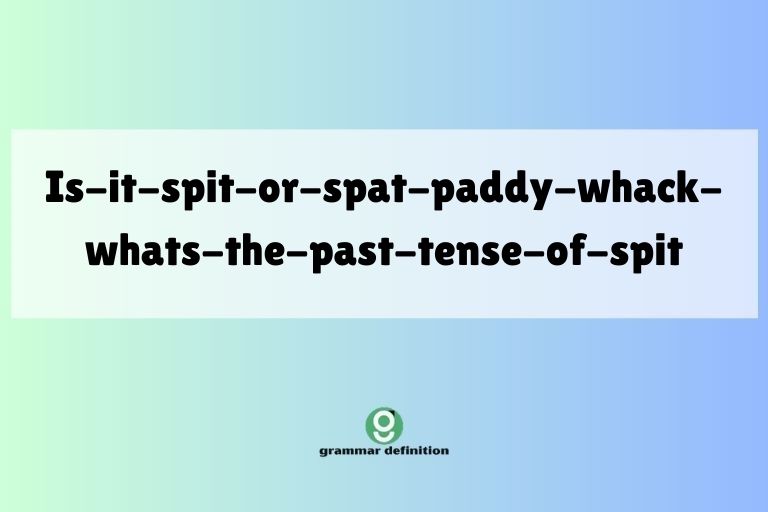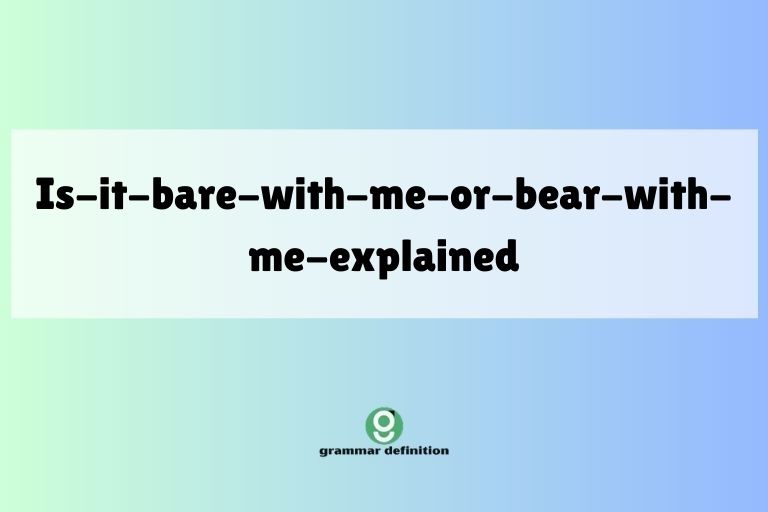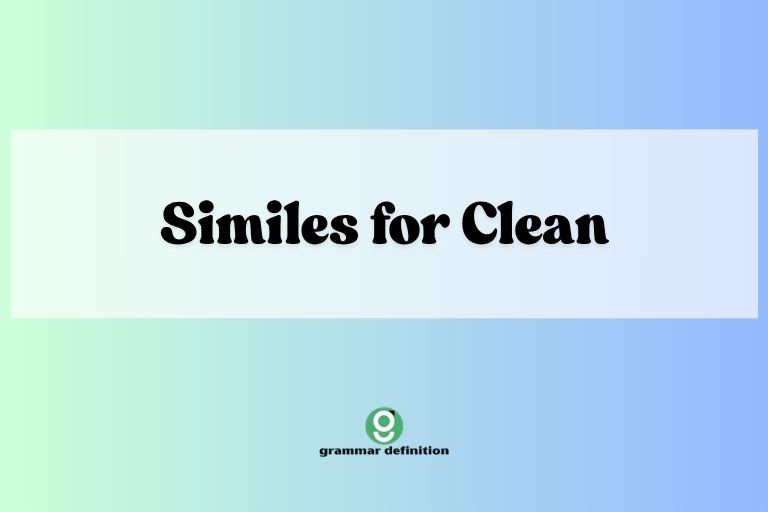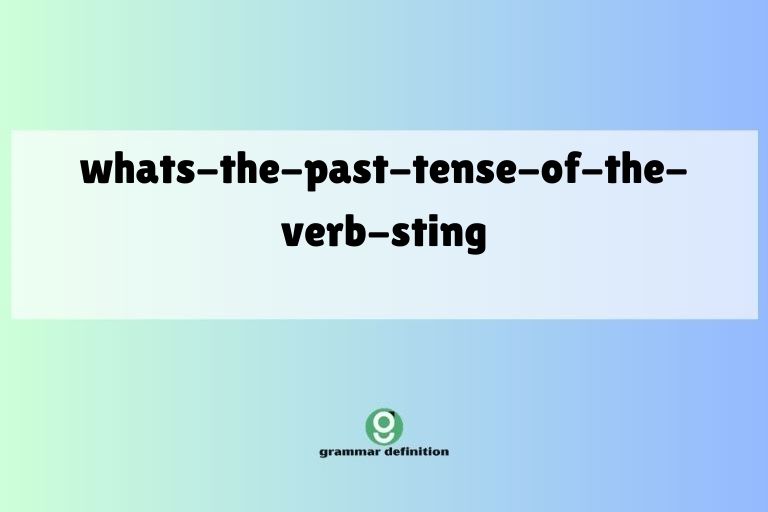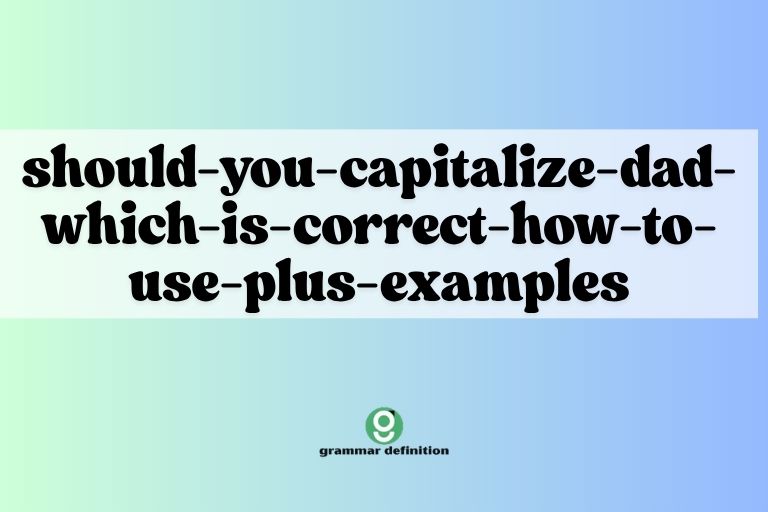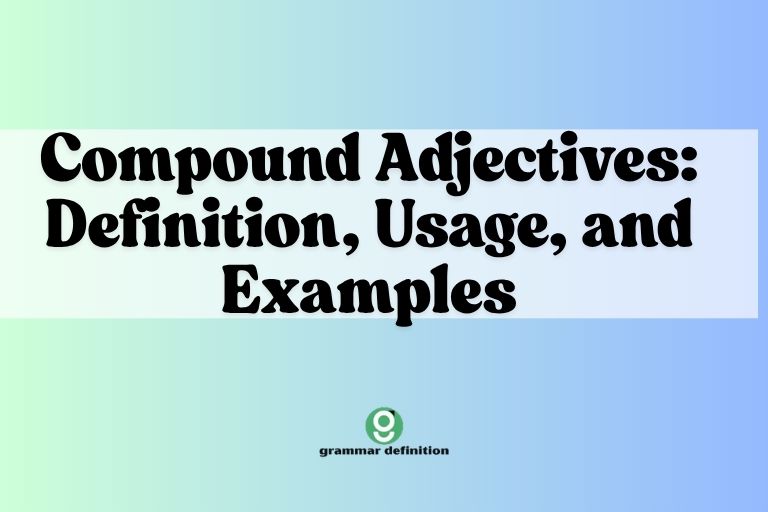Comma Before or After “But”: Mastering Correct Usage
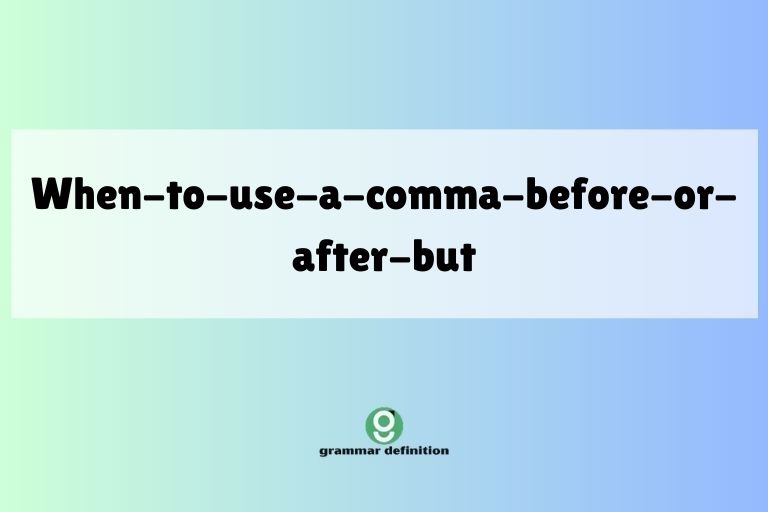
Understanding when to use a comma before or after the conjunction “but” is crucial for clear and effective writing. The placement of a comma can significantly alter the meaning and flow of a sentence.
This article provides a comprehensive guide to mastering comma usage with “but,” covering various scenarios, rules, exceptions, and common mistakes. Whether you are a student, a professional writer, or simply someone looking to improve their grammar skills, this guide will equip you with the knowledge and practice needed to use commas correctly with “but.”
Table of Contents
- Definition of “But” and its Role in Grammar
- Structural Breakdown: Understanding Clauses and Phrases
- Types of “But” and Comma Usage
- Examples of Comma Usage with “But”
- Usage Rules: When to Use a Comma with “But”
- Common Mistakes: Avoiding Errors with “But” and Commas
- Practice Exercises
- Advanced Topics: Nuances and Complex Cases
- Frequently Asked Questions (FAQ)
- Conclusion
Definition of “But” and its Role in Grammar
In English grammar, “but” is primarily a coordinating conjunction. A coordinating conjunction connects words, phrases, or clauses of equal grammatical rank. “But” indicates a contrast, exception, or opposition between the elements it joins. Understanding its function is essential for determining proper comma placement. It signals that what follows will in some way contradict, qualify, or stand in contrast to what precedes it.
Beyond its role as a coordinating conjunction, “but” can also function as a transitional word, albeit less commonly. As a transitional word, it helps to connect ideas between sentences or paragraphs, emphasizing a shift in thought or direction. In this context, comma usage might differ slightly compared to its coordinating conjunction role. The key is to recognize the specific function of “but” within the sentence to apply the correct punctuation rules.
Structural Breakdown: Understanding Clauses and Phrases
To properly use commas with “but,” it’s essential to understand the basic structural elements of a sentence: clauses and phrases. A clause is a group of words that contains a subject and a verb. An independent clause can stand alone as a sentence, expressing a complete thought. A dependent clause, also known as a subordinate clause, cannot stand alone and relies on an independent clause to form a complete sentence. A phrase, on the other hand, is a group of related words that does not contain both a subject and a verb.
The type of clauses or phrases that “but” connects directly influences comma usage. When “but” joins two independent clauses, a comma is typically required before “but.” However, when “but” connects two phrases or two words, a comma is usually not necessary.
Recognizing these structural differences is crucial for accurate punctuation.
Types of “But” and Comma Usage
“But” as a Coordinating Conjunction
As a coordinating conjunction, “but” connects elements of equal grammatical rank, usually two independent clauses. This is its most common role, and it typically requires a comma before the “but.” The comma signals a pause and indicates that the second clause provides a contrasting or opposing idea to the first clause.
Consider these examples:
- She wanted to go to the party, but she was too tired.
- He studied hard for the exam, but he still failed.
- They offered him the job, but he turned it down.
“But” as a Transitional Word
While less common, “but” can also function as a transitional word, connecting ideas between sentences or paragraphs. In this usage, the comma placement can vary depending on the specific context and desired emphasis.
Sometimes, a comma might follow “but” to create a slight pause or to emphasize the transition. Other times, no comma is needed if “but” smoothly integrates into the sentence flow.
Here are some examples:
- He was late. But, more importantly, he forgot the presentation.
- She tried her best. But ultimately, she couldn’t succeed.
- The weather was terrible. But despite that, they enjoyed their trip.
Examples of Comma Usage with “But”
“But” Connecting Independent Clauses
When “but” connects two independent clauses, a comma should generally precede it. This rule helps to create a clear separation between the two complete thoughts and improve readability.
Below is a table with numerous examples.
The following table showcases examples of “but” connecting independent clauses, each requiring a comma before the “but”:
| Sentence | Comma Before “But”? | Explanation |
|---|---|---|
| She loves to read novels, but she doesn’t have much time. | Yes | Two independent clauses connected by “but.” |
| He wanted to travel the world, but he couldn’t afford it. | Yes | Two independent clauses showing contrast. |
| They invited her to the wedding, but she was unable to attend. | Yes | Contrasting actions by different subjects. |
| The food was delicious, but the service was slow. | Yes | Contrasting aspects of the dining experience. |
| I wanted to go for a walk, but it started to rain. | Yes | Contrasting desires and weather conditions. |
| She studied diligently for the exam, but she still felt nervous. | Yes | Contrasting actions and emotions. |
| He tried to fix the car, but he couldn’t figure out the problem. | Yes | Contrasting attempts and failures. |
| They offered him a promotion, but he declined the offer. | Yes | Contrasting offers and decisions. |
| The movie was entertaining, but the ending was disappointing. | Yes | Contrasting aspects of the movie. |
| I wanted to buy a new phone, but I didn’t have enough money. | Yes | Contrasting desires and financial limitations. |
| She practiced the piano every day, but she still made mistakes. | Yes | Contrasting effort and imperfections. |
| He wanted to learn a new language, but he found it too difficult. | Yes | Contrasting desires and challenges. |
| They planned a picnic, but the weather turned bad. | Yes | Contrasting plans and weather conditions. |
| The book was interesting, but it was also very long. | Yes | Contrasting aspects of the book. |
| I wanted to sleep in, but I had to go to work. | Yes | Contrasting desires and responsibilities. |
| She enjoys playing sports, but she prefers watching them. | Yes | Two contrasting activities. |
| He likes coffee, but she prefers tea. | Yes | Contrasting preferences. |
| They wanted to buy the house, but the price was too high. | Yes | Contrasting intentions and financial constraints. |
| The project was challenging, but it was also rewarding. | Yes | Contrasting aspects of the project. |
| I tried to call him, but he didn’t answer. | Yes | Contrasting actions and results. |
| She packed her suitcase, but she forgot her toothbrush. | Yes | Contrasting actions and oversights. |
| He studied for hours, but he still felt unprepared. | Yes | Contrasting effort and feelings. |
| They wanted to go to the beach, but it was too crowded. | Yes | Contrasting desires and realities. |
| The concert was amazing, but the venue was too small. | Yes | Contrasting aspects of the concert experience. |
| I wanted to bake a cake, but I was out of flour. | Yes | Contrasting desires and resource limitations. |
“But” Connecting Compound Subjects or Objects
When “but” connects compound subjects, objects, or other elements within a simple sentence, a comma is generally not needed. The “but” in these cases creates a smooth flow without requiring a pause.
The following table illustrates cases where “but” connects compound subjects or objects, and no comma is required:
| Sentence | Comma Before “But”? | Explanation |
|---|---|---|
| He likes not apples but oranges. | No | “But” connects two objects. |
| Not John but Mary will present the award. | No | “But” connects two subjects. |
| She wanted not recognition but respect. | No | “But” connects two objects of the verb. |
| He’s interested not in money but in helping people. | No | “But” connects two prepositional phrases. |
| The focus was not on blame but on solutions. | No | “But” connects two objects of the preposition. |
| Not the manager but the team decided the strategy. | No | “But” connects two subjects. |
| She asked for not a refund but an apology. | No | “But” connects two objects. |
| He wanted not to complain but to offer suggestions. | No | “But” connects two infinitives. |
| The movie was not boring but predictable. | No | “But” connects two adjectives describing the movie. |
| She chose not the blue dress but the red one. | No | “But” connects two objects. |
| He prefers not talking but doing. | No | “But” connects two gerunds. |
| They needed not permission but support. | No | “But” connects two objects. |
| She wanted not to criticize but to help. | No | “But” connects two infinitives. |
| He was looking not for answers but for understanding. | No | “But” connects two objects of the preposition. |
| They sought not fame but fortune. | No | “But” connects two objects. |
| She is interested not in politics but in art. | No | “But” connects two objects of preposition. |
| He is known not for his strength but for his intelligence. | No | “But” connects two prepositional phrases. |
| They wanted not to argue but to compromise. | No | “But” connects two infinitives. |
| She is talented not only in music but also in dance. | No | “But” connects two adverbs. |
| He prefers not to read but to write. | No | “But” connects two infinitives. |
| They are interested not in profit but in social impact. | No | “But” connects two objects. |
| She is known not for her beauty but for her kindness. | No | “But” connects two objects of preposition. |
| He wanted not to escape but to confront. | No | “But” connects two infinitives. |
| They are focused not on problems but on solutions. | No | “But” connects two objects. |
| She is driven not by ambition but by passion. | No | “But” connects two objects of preposition. |
“But” Following Introductory Elements
If “but” follows an introductory element (such as an introductory phrase or clause), the need for a comma depends on the length and complexity of the introductory element. Short introductory elements generally don’t require a comma after “but,” while longer or more complex ones might benefit from a comma for clarity.
The subsequent table illustrates the use of commas after “but” following introductory elements:
| Sentence | Comma After “But”? | Explanation |
|---|---|---|
| After all, but it’s not always easy. | No | Short introductory phrase. |
| Despite everything, but she persevered. | No | Short introductory phrase. |
| In conclusion, but there are still some caveats. | Yes | Introductory phrase followed by a contrasting statement. |
| Regardless of the outcome, but we must try our best. | Yes | More complex introductory phrase. |
| To be honest, but I don’t really care. | Yes | Common introductory phrase. |
| Generally speaking, but there are exceptions. | Yes | Introductory phrase indicating a generalization. |
| First of all, but let’s not forget the main issue. | Yes | Introductory phrase indicating sequence. |
| In any case, but we should proceed with caution. | Yes | Introductory phrase indicating a shift in topic. |
| For example, but this doesn’t apply to everyone. | Yes | Introductory phrase giving an example. |
| On the other hand, but it could also be beneficial. | Yes | Introductory phrase indicating a different perspective. |
| Furthermore, but there are additional factors to consider. | Yes | Introductory phrase adding more information. |
| Nevertheless, but we must remain optimistic. | Yes | Introductory phrase indicating a contrasting situation. |
| In short, but the situation is complicated. | Yes | Introductory phrase summarizing the topic. |
| To summarize, but there are still some uncertainties. | Yes | Introductory phrase wrapping up the discussion. |
| In general, but this is not always the case. | Yes | Introductory phrase stating a general rule. |
| Ultimately, but there are other considerations. | Yes | Introductory phrase indicating a conclusion. |
| In reality, but things didn’t go as planned. | Yes | Introductory phrase contrasting reality. |
| Surprisingly, but it turned out to be a great success. | Yes | Introductory phrase expressing surprise. |
| Honestly, but I don’t think it’s a good idea. | Yes | Introductory phrase expressing honesty. |
| Unfortunately, but we have to cancel the event. | Yes | Introductory phrase expressing regret. |
| Basically, but it all comes down to money. | Yes | Introductory phrase simplifying the issue. |
| Essentially, but the core problem remains unsolved. | Yes | Introductory phrase highlighting the core issue. |
| Technically, but it’s not strictly accurate. | Yes | Introductory phrase adding a technical detail. |
| Specifically, but this applies only to certain cases. | Yes | Introductory phrase specifying the context. |
| Evidently, but there’s more to the story. | Yes | Introductory phrase implying more information. |
“But” Introducing Parenthetical Elements
A parenthetical element is a word, phrase, or clause that adds extra information or clarification to a sentence but is not essential to its main meaning. When “but” introduces a parenthetical element, it is usually set off with commas (or sometimes dashes or parentheses, depending on the desired level of interruption).
The “but” itself is considered part of the parenthetical element and is included within the punctuation.
The table below provides examples of “but” introducing parenthetical elements, each set off by commas:
| Sentence | Comma Usage | Explanation |
|---|---|---|
| The project, but this is just my opinion, is doomed to fail. | Commas around “but this is just my opinion” | Parenthetical phrase adding a disclaimer. |
| She tried her best, but, unfortunately, it wasn’t enough. | Commas around “but, unfortunately,” | Parenthetical adverb adding commentary. |
| He arrived late, but, surprisingly, no one noticed. | Commas around “but, surprisingly,” | Parenthetical adverb expressing surprise. |
| The plan, but I’m not sure about this, seems risky. | Commas around “but I’m not sure about this” | Parenthetical phrase expressing uncertainty. |
| The weather, but it could change, is currently sunny. | Commas around “but it could change” | Parenthetical clause adding a possibility. |
| The car, but it’s quite old, still runs well. | Commas around “but it’s quite old” | Parenthetical clause adding a detail. |
| The book, but I haven’t finished it, is quite interesting. | Commas around “but I haven’t finished it” | Parenthetical clause adding personal experience. |
| The food, but it’s a bit spicy, is delicious. | Commas around “but it’s a bit spicy” | Parenthetical clause adding a characteristic. |
| The movie, but I was tired, was hard to follow. | Commas around “but I was tired” | Parenthetical clause adding personal context. |
| The game, but it was close, ended in a tie. | Commas around “but it was close” | Parenthetical clause adding a detail about the game. |
| The presentation, but I’m nervous, is tomorrow. | Commas around “but I’m nervous” | Parenthetical clause expressing emotion. |
| The concert, but it’s sold out, is next week. | Commas around “but it’s sold out” | Parenthetical clause adding information about availability. |
| The meeting, but I might be late, starts at 9 AM. | Commas around “but I might be late” | Parenthetical clause adding a potential issue. |
| The project, but it’s challenging, is worth it. | Commas around “but it’s challenging” | Parenthetical clause adding difficulty. |
| The trip, but it’s expensive, will be memorable. | Commas around “but it’s expensive” | Parenthetical clause adding financial aspect. |
| The course, but it’s demanding, is highly recommended. | Commas around “but it’s demanding” | Parenthetical clause adding workload. |
| The job, but it’s stressful, is also rewarding. | Commas around “but it’s stressful” | Parenthetical clause adding stress factor. |
| The task, but it’s tedious, must be completed. | Commas around “but it’s tedious” | Parenthetical clause adding difficulty. |
| The exercise, but it’s beneficial, is often ignored. | Commas around “but it’s beneficial” | Parenthetical clause adding importance. |
| The rule, but it’s confusing, is essential to follow. | Commas around “but it’s confusing” | Parenthetical clause adding complexity. |
| The process, but it’s lengthy, is necessary for success. | Commas around “but it’s lengthy” | Parenthetical clause adding time factor. |
| The argument, but it’s complex, has merit. | Commas around “but it’s complex” | Parenthetical clause adding complexity. |
| The solution, but it’s temporary, will suffice for now. | Commas around “but it’s temporary” | Parenthetical clause adding time constraint. |
| The result, but it’s unexpected, is still welcome. | Commas around “but it’s unexpected” | Parenthetical clause adding surprise. |
| The outcome, but it’s uncertain, is eagerly awaited. | Commas around “but it’s uncertain” | Parenthetical clause adding anticipation. |
Usage Rules: When to Use a Comma with “But”
Rule 1: Comma Before “But” in Compound Sentences
Use a comma before “but” when it connects two independent clauses in a compound sentence. This is the most common rule and applies when each part of the sentence could stand alone as its own sentence. The comma signals a pause and indicates the contrasting nature of the second clause.
Example: She wanted to go shopping, but she didn’t have any money.
Rule 2: No Comma Before “But” in Simple Sentences
Do not use a comma before “but” when it connects words or phrases in a simple sentence. In these cases, “but” is simply linking elements within the same clause, and a comma would disrupt the natural flow of the sentence.
Example: He likes not apples but oranges.
Rule 3: Comma After “But” for Interjections or Emphasis
A comma can follow “but” when it is used as a transitional word to introduce a sentence, especially for emphasis or to set off an interjection. This usage is less common but can be effective in certain contexts.
Example: But, more importantly, we need to address the underlying issues.
Exceptions to the Rules
While the above rules are generally applicable, there are some exceptions and nuances to consider. One exception involves very short, closely related independent clauses.
In some cases, the comma before “but” can be omitted for stylistic reasons, particularly if the sentence feels fluid and clear without it. However, this is a matter of stylistic choice and should be used sparingly.
Another exception can occur when “but” is part of a longer parenthetical element that is already set off by commas. In such cases, adding an additional comma before “but” might be redundant or unnecessary.
Common Mistakes: Avoiding Errors with “But” and Commas
One of the most common mistakes is omitting the comma before “but” when it connects two independent clauses. This can make the sentence appear as a run-on sentence and confuse the reader.
Another frequent error is adding a comma before “but” when it connects words or phrases within a simple sentence, disrupting the sentence’s flow.
Here’s a table illustrating common mistakes and their corrections:
| Incorrect | Correct | Explanation |
|---|---|---|
| She wanted to go but she was too tired. | She wanted to go, but she was too tired. | Missing comma before “but” connecting independent clauses. |
| He likes not apples, but oranges. | He likes not apples but oranges. | Unnecessary comma before “but” connecting objects. |
| But however, we must consider the alternatives. | But, however, we must consider the alternatives. | Correct comma placement after “but” when used transitionally. |
| I wanted to buy it but didn’t have enough money. | I wanted to buy it, but I didn’t have enough money. | Missing comma before “but” connecting independent clauses. |
| Not the students, but the teacher made the decision. | Not the students but the teacher made the decision. | Unnecessary comma before “but” connecting subjects. |
| She tried hard but failed. | She tried hard, but she failed. | Missing comma before “but” connecting independent clauses. |
| They offered help but it was refused. | They offered help, but it was refused. | Missing comma before “but” connecting independent clauses. |
| He wanted not fame, but recognition. | He wanted not fame but recognition. | Unnecessary comma before “but” connecting objects. |
| But, in addition we need to think about the budget. | But, in addition, we need to think about the budget. | Correct comma placement after “but” when used transitionally. |
| I needed to study, but I was too tired, so I went to sleep. | I needed to study, but I was too tired, so I went to sleep. | Correct as written, but can be improved for flow. |
| She is not only intelligent but also kind. | She is not only intelligent but also kind. | Correct as written (no comma needed). |
| They wanted not to argue, but to understand. | They wanted not to argue but to understand. | Unnecessary comma before “but” connecting infinitives. |
| He likes not the heat, but the humidity. | He likes not the heat but the humidity. | Unnecessary comma before “but” connecting objects. |
| But unfortunately, it was too late. | But, unfortunately, it was too late. | Correct comma placement after “but” when used transitionally. |
| I tried to fix it, but I failed miserably. | I tried to fix it, but I failed miserably. | Correct as written (comma needed). |
Practice Exercises
Exercise 1: Identifying Correct Comma Usage
In the following sentences, identify whether the comma usage with “but” is correct or incorrect. Explain your reasoning.
- She wanted to sing, but she was too nervous.
- He likes not running, but swimming.
- But, more importantly, we need to focus on the budget.
- They offered him the job but he refused.
- I wanted to buy a car, but I didn’t have enough money.
- She enjoys not the work, but the people.
- But therefore, we must act decisively.
- He tried his best, but he still failed.
- They needed not permission, but forgiveness.
- But, in general, things are improving.
Answer Key:
- Correct. Comma before “but” connecting independent clauses.
- Incorrect. No comma needed when “but” connects phrases.
- Correct. Comma after “but” for emphasis.
- Incorrect. Missing comma before “but” connecting independent clauses.
- Correct. Comma before “but” connecting independent clauses.
- Incorrect. No comma needed when “but” connects phrases.
- Incorrect. Comma needed after “But”.
- Correct. Comma before “but” connecting independent clauses.
- Incorrect. No comma needed when “but” connects phrases.
- Correct. Comma after “but” for emphasis.
Exercise 2: Adding Commas Where Necessary
Add commas to the following sentences where they are needed before or after “but.” If a sentence is already correct, indicate “Correct.”
- He wanted to go but he couldn’t.
- But more importantly we need to address this issue.
- She enjoys reading but not writing.
- I tried my best but it wasn’t enough.
- They offered a solution but it was rejected.
- She likes not cats but dogs.
- But however we must proceed with caution.
- He is not only smart but also kind.
- They wanted to help but they didn’t know how.
- But in general things are going well.
Answer Key:
- He wanted to go, but he couldn’t.
- But, more importantly, we need to address this issue.
- Correct.
- I tried my best, but it wasn’t enough.
- They offered a solution, but it was rejected.
- Correct.
- But, however, we must proceed with caution.
- Correct.
- They wanted to help, but they didn’t know how.
- But, in general, things are going well.
Exercise 3: Correcting Incorrect Comma Usage
Correct the following sentences where the comma usage with “but” is incorrect. If a sentence is already correct, indicate “Correct.”
- She wanted to travel, but she had no money.
- He is interested not in sports, but in music
but in music.
- But, consequently, we need to reconsider our strategy.
- They offered help, but it was too late.
- He enjoys not reading, but writing.
- But therefore, we must act quickly.
- She is not only intelligent, but also kind.
- They wanted not fame, but recognition.
- But, in summary, the results are promising.
- I tried to fix it but, I made it worse.
Answer Key:
- Correct.
- He is interested not in sports but in music.
- But, consequently, we need to reconsider our strategy.
- Correct.
- He enjoys not reading but writing.
- But, therefore, we must act quickly.
- She is not only intelligent but also kind.
- Correct.
- But, in summary, the results are promising.
- I tried to fix it, but I made it worse.
Advanced Topics: Nuances and Complex Cases
The Serial (Oxford) Comma and “But”
The serial comma, also known as the Oxford comma, is the comma placed before “and” or “or” in a list of three or more items. The use of the serial comma is a matter of style, with some style guides (like AP) recommending against it and others (like the Chicago Manual of Style) recommending its use for clarity.
When “but” is used in conjunction with a list, the decision to use the serial comma remains a stylistic choice.
For example:
- With serial comma: She likes apples, bananas, and oranges, but she hates grapes.
- Without serial comma: She likes apples, bananas and oranges, but she hates grapes.
Sentences with Multiple “Buts”
Sentences with multiple “buts” can become complex and confusing if not punctuated carefully. Each “but” should be evaluated independently to determine whether it connects independent clauses, phrases, or introduces parenthetical elements.
Using commas consistently and strategically can help maintain clarity.
Example:
It was a difficult challenge, but, surprisingly, they succeeded, but not without significant effort.
Frequently Asked Questions (FAQ)
- Q: Is it always necessary to put a comma before “but”?
- A: No, a comma is only necessary when “but” connects two independent clauses. When “but” connects words or phrases within a simple sentence, no comma is needed.
- Q: Can I start a sentence with “but”?
- A: Yes, it is grammatically correct to start a sentence with “but,” especially for transitional purposes or to emphasize a contrast. However, overuse can weaken your writing.
- Q: What if the independent clauses connected by “but” are very short?
- A: In some cases, very short and closely related independent clauses can omit the comma before “but” for stylistic reasons, but this should be done sparingly and only when the sentence remains clear.
- Q: Should I use a comma after “but” if it starts a sentence?
- A: A comma after “but” at the beginning of a sentence is generally used when “but” is followed by an interjection or a transitional phrase for emphasis or clarity.
- Q: How do I decide whether to use a comma with “but” in complex sentences?
- A: Break down the sentence into its component clauses and phrases. Identify what “but” is connecting and apply the appropriate rules based on whether it is connecting independent clauses, phrases, or introducing parenthetical elements.
Conclusion
Mastering the use of commas with “but” involves understanding its role as a coordinating conjunction and a transitional word, recognizing sentence structures, and applying specific usage rules. By avoiding common mistakes and practicing consistently, you can improve the clarity and effectiveness of your writing.
Remember to evaluate each instance of “but” in context to determine the appropriate comma placement. With these guidelines, you’ll be well-equipped to use commas correctly with “but” in any writing situation.

